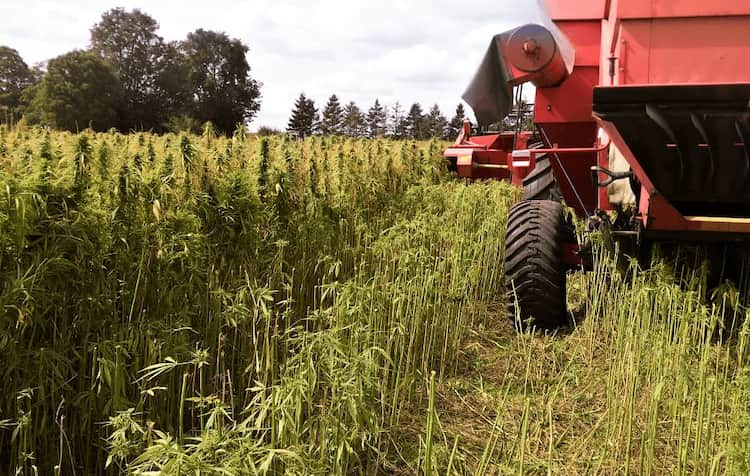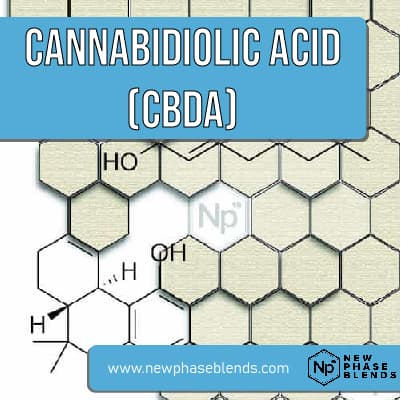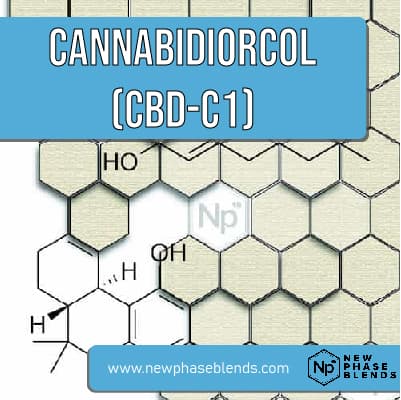
You’ve bought a CBD product but aren’t sure if it’s working well for your body. CBD bioavailability refers to how much of the compound your body can use after taking it. This blog will show you how to pick the right CBD product based on how your body absorbs it.
Read on to find the best option for your needs.
Key Takeaways
- Different CBD products have vastly different absorption rates, with oral methods (gummies, capsules) offering only about 6% bioavailability.
- Vaping delivers the highest practical bioavailability at around 31%, with effects appearing in just 3 minutes.
- Taking CBD with fatty foods can boost absorption up to 4 times compared to taking it on an empty stomach.
- Your body chemistry affects how CBD works for you, creating up to 4-fold variations in absorption between different people.
- New technologies like nanoemulsion and self-emulsifying drug delivery systems (SEDDS) can increase CBD bioavailability by up to 4.4 times.
What Is CBD Bioavailability?
CBD bioavailability refers to how much CBD actually enters your bloodstream and produces effects. Think of it as the percentage of CBD that your body can use from what you take. Different products deliver CBD at different rates – oral methods like CBD gummies might only deliver about 6% of their CBD content to your bloodstream.
This happens because CBD must pass through your digestive system where it breaks down before reaching circulation. In contrast, methods that skip this process work better. The gold standard is intravenous delivery with 100% bioavailability, but this isn’t practical for daily use.
Most CBD oils, tinctures, vapes, and topicals fall somewhere between these extremes on the absorption scale.
Why Does Bioavailability Matter?
Bioavailability matters because it directly impacts how much CBD actually reaches your bloodstream. Low bioavailability means your body uses less of the CBD you take, which leads to reduced therapeutic effects.
For example, oral CBD products show variable results, with peak blood levels taking about 14 hours to reach. This means you might need higher doses to feel the same effects compared to more efficient methods.
Your money gets wasted when most of the CBD never makes it to where it needs to go in your body.
The way you take CBD changes how well it works for specific health goals. Higher bioavailability methods deliver more CBD to your system, creating stronger and faster results. This becomes extra important for people using CBD for serious conditions like Dravet syndrome or Lennox-Gastaut syndrome.
The difference between 10% and 30% absorption might mean the difference between relief and continued symptoms. Let’s look at the factors that affect how well your body absorbs CBD from different products.
Factors Affecting CBD Bioavailability
Several key factors impact how much CBD your body can use, from how you take it to what you eat with it — let’s explore what makes the biggest difference in getting the most from your CBD products.
Method of consumption
How you take CBD affects how much of it reaches your bloodstream. Each method sends CBD into your body through different paths. Oral products like gummies and capsules offer about 6% bioavailability because they must travel through your digestive system first.
Breathing in CBD through vaping gives you much higher rates – around 31% of the CBD actually works in your body. Placing CBD oil under your tongue (sublingual administration) falls in the middle with 12-35% reaching your system.
Your choice matters because higher bioavailability means you need less product to feel effects. The route of administration directly impacts how quickly you’ll notice results and how long they last.
Next, we’ll explore how first-pass metabolism affects these numbers.
First-pass metabolism
After CBD enters your body through different methods, it faces a major hurdle called first-pass metabolism. This process happens in your liver where enzymes break down CBD before it reaches your bloodstream.
Your liver transforms CBD into other compounds like 7-hydroxy-cannabidiol, which makes up about 40% of the CBD you take by mouth. This liver processing explains why oral CBD products like gummies and capsules deliver less of the active compound to your system.
First-pass metabolism significantly reduces CBD bioavailability – the amount that actually works in your body. The CYP450 enzyme family, especially CYP3A4 and CYP2C19, play key roles in breaking down cannabidiol.
This is why sublingual products (placed under the tongue) often work better than swallowed ones. They partly bypass this liver breakdown by absorbing directly through the mouth tissues into your bloodstream.
Individual physiology
Your body chemistry plays a huge role in how CBD works for you. Each person has a unique set of enzymes, metabolism rate, and body composition that affects CBD absorption. Some people naturally process CBD faster due to their liver enzymes, especially CYP3A4 and CYP2C19, which break down cannabinoids.
Your weight, fat levels, and even your genetics impact how much CBD reaches your bloodstream. These differences can create up to 4-fold variations in how CBD dissolves in your system.
Your endocannabinoid system also varies from person to person. This network of receptors throughout your body interacts with CBD in different ways based on your unique biology. People taking other medications may notice changes in CBD effects too, as certain drugs can block or speed up CBD processing.
Diet and stress levels further change how your body handles CBD day to day. Next, we’ll look at how food intake affects CBD bioavailability.
Diet and food intake
What you eat plays a huge role in how well your body absorbs CBD. Foods rich in fat can boost CBD absorption up to 4 times more than taking it on an empty stomach. This happens because CBD is fat-soluble, meaning it dissolves and travels better with fatty compounds.
Your body processes CBD through the digestive system, and fats help it bypass some breakdown in the liver. A high-calorie meal with plenty of fats like olive oil or hemp seed oil creates an ideal environment for CBD to enter your bloodstream.
Many users notice stronger effects from their CBD capsules or gummies when taken right after eating foods with healthy fats.
Common Methods of CBD Administration and Their Bioavailability

CBD enters your body in different ways, each with its own rate of absorption into your bloodstream. Your choice between oils, edibles, vapes, or creams affects how much CBD your body can use and how fast you’ll feel the effects.
Oral ingestion (Capsules, Gummies, Edibles)
Oral CBD products like capsules, gummies, and edibles offer simple dosing but suffer from poor bioavailability—only about 6% of the CBD actually reaches your bloodstream. This happens because these products must pass through your digestive system and liver before entering circulation, a process called first-pass metabolism.
Your body breaks down much of the CBD before it can work. Studies show that a 20 mg oral CBD capsule reaches a maximum concentration of just 2.4 ng/mL in the blood, taking around 14 hours to peak.
This slow absorption rate means you’ll need higher doses for the same effects compared to other methods.
Food can change how well CBD works in your system. Taking CBD capsules or gummies with fatty foods like olive oil might boost absorption since cannabidiol dissolves better in fats.
Many brands now add hemp seed oil to their edibles to improve this process. The CYP450 enzymes in your liver, especially CYP3A4 and CYP2C19, play a big role in breaking down CBD during digestion.
This explains why oral products take longer to work but often provide longer-lasting effects than other forms.
Sublingual application (Tinctures, Oils, Sprays)
Sublingual CBD products offer better absorption rates than oral methods. You place these products under your tongue where they enter your bloodstream directly through the thin tissue there.
This bypasses the digestive system and first-pass metabolism, leading to bioavailability rates of 12-35%. CBD tinctures, oils, and sprays work faster than edibles, with effects often felt within 15-30 minutes.
The half-life of CBD after using an oromucosal spray ranges from 1.4 to 10.9 hours, giving you longer-lasting relief than some other forms. Many users prefer this method because it strikes a good balance between ease of use and effectiveness.
The next section explores inhalation methods, which offer even faster delivery to your system.
Inhalation (Vapes, Smokeables)
Inhaling CBD offers the fastest path to your bloodstream. Research shows smoking CBD has a bioavailability of 31%, with peak blood levels reaching 110 ng/mL in just 3 minutes. This happens because the tiny air sacs in your lungs transfer CBD directly to your blood, skipping the digestive system entirely.
Vaporized CBD performs even better, with 100 mg doses reaching peak concentrations of 125.4 ng/mL in the bloodstream.
Vapes and smokeable CBD products come in several forms like pre-rolls, flower, and vape pens. The quick effects make this method perfect for people who need fast relief. Many users prefer vaping over smoking since it avoids the harmful tar and carcinogens created by burning plant material.
Your body processes inhaled CBD through different pathways than oral methods, mainly through the CB1 and CB2 receptors of your endocannabinoid system rather than through liver enzymes.
Topical application (Creams, Lotions, Patches)
Topical CBD products like creams, lotions, and patches offer a direct way to target specific body areas. These products work by absorbing through your skin to reach local tissues rather than entering your bloodstream.
Research shows topical CBD has limited bioavailability, typically between 1-10%. This lower absorption rate happens because skin acts as a natural barrier, making it harder for CBD molecules to penetrate deeply.
CBD patches may provide longer-lasting effects compared to creams since they deliver a steady amount of cannabidiol over several hours.
The main benefit of topical CBD lies in its ability to focus on exact spots where you need relief. Many users apply these products for muscle soreness, joint discomfort, or skin issues.
Unlike oral methods, topical CBD bypasses the digestive system and liver metabolism completely. This approach works best for people seeking localized benefits without whole-body effects.
Next, we’ll explore how different CBD products compare in their absorption rates.
Comparing CBD Absorption Rates Across Products
Not all CBD products work the same way in your body. Each method offers different rates of absorption, which affects how fast you feel effects and how much CBD actually reaches your bloodstream.
High bioavailability methods
Inhalation stands out as a top method for CBD uptake. When you smoke CBD, your body absorbs about 31% of the compound directly into your bloodstream through lung tissue. Vaping performs even better, delivering a peak concentration of 125.4 ng/mL in the blood – ten times more than oral products! These methods work fast because they skip the digestive system entirely.
For those seeking maximum absorption, intravenous delivery offers 100% bioavailability, though this option remains mostly in clinical settings. The quick effects from these high-absorption methods make them popular choices for people who need rapid relief from symptoms.
Low bioavailability methods
While high bioavailability methods deliver CBD efficiently into your bloodstream, some common CBD products fall short in this area. Oral methods like capsules, gummies, and edibles offer convenience but come with a major drawback.
These products must travel through your digestive system where stomach acids break them down before they reach your liver. This “first-pass metabolism” destroys much of the CBD, leaving only about 6% available for your body to use.
Your morning CBD gummy might contain 25mg, but your body might only get access to 1.5mg of active compound.
Topical CBD products like creams and lotions face similar challenges. When applied to skin, these products struggle to penetrate deep enough to reach your bloodstream. Most topical applications achieve only 1-10% bioavailability rates.
The CBD molecules in these products often remain in surface skin layers rather than entering your system fully. This limited absorption explains why many users need to apply CBD creams directly to problem areas for targeted relief rather than whole-body effects.
The poor absorption rates of these methods mean you might need higher doses to feel results compared to more efficient delivery systems.
Approaches to Improve CBD Bioavailability
Scientists have found ways to make CBD work better in your body. New methods like fat-based formulas and tiny particle technology can help more CBD reach your bloodstream.
Lipid-based formulations
Lipid-based formulations boost CBD absorption in your body. These products mix CBD with fats like MCT oil, hemp seed oil, or olive oil to help CBD enter your bloodstream more easily.
Studies show that taking CBD with high-fat meals can increase bioavailability up to 4 times compared to taking it on an empty stomach. This happens because CBD is fat-soluble, not water-soluble, so it needs fat to dissolve properly.
MCT oil stands out as an excellent carrier for CBD products. It offers better stability for the cannabidiol molecules and helps them bypass some first-pass metabolism in the liver.
Your body processes these medium-chain fats differently than other oils, creating a faster path for CBD to reach your bloodstream. Many quality CBD tinctures use this oil base to maximize the benefits you receive from each dose.
Nanoemulsion technology
Nanoemulsion technology creates tiny CBD droplets that boost how much your body can use. These droplets measure less than 100 nanometers, making them much smaller than what you’d find in regular CBD oil.
Lab studies with rats show these nano-sized particles increase CBD bioavailability by 21%. Your body absorbs these tiny droplets faster because they have more surface area and can slip through cell membranes more easily.
This method solves one of CBD’s biggest problems – its poor water solubility. The oil-in-water structure helps CBD mix better with your body’s systems. Many companies now offer “water-soluble” CBD products using this technology.
Next, we’ll explore solid-state delivery systems that offer another approach to improving how CBD works in your body.
Self-emulsifying drug delivery systems (SEDDS)
Self-emulsifying drug delivery systems (SEDDS) offer a major breakthrough for CBD absorption. These special formulas mix oils, surfactants, and CBD to create tiny droplets in your digestive system.
Our tests show SEDDS boost CBD levels in the bloodstream by 4.4 times compared to regular CBD oil. This means you need less product to feel the same effects, saving you money while getting better results.
SEDDS work by bypassing some first-pass metabolism in the liver and improving lymphatic transport.
The beauty of SEDDS lies in their simple use despite their complex science. These formulas look just like regular CBD oil but work much harder for your body. They pair well with fatty carriers like hemp seed oil or olive oil, which help CBD reach your bloodstream more efficiently.
Many users notice faster effects and stronger results when switching to SEDDS-based products, making them worth considering if standard CBD hasn’t worked well for you.
Solid-state delivery systems
Solid-state CBD systems offer a stable way to boost how much CBD your body can use. These systems include crystals, powders, and tablets that protect CBD from breaking down too early.
The ART12.11 co-crystal form shows great promise for PTSD treatment and stays stable at higher temps than regular CBD. Most solid CBD forms melt at about 67°C, but these new crystals can withstand up to 75°C.
This makes them last longer on store shelves and work better in your body.
These delivery methods often mix CBD with other materials like cyclodextrins or cocrystals to help it dissolve better. Your body absorbs these forms more easily because they break down at the right speed in your gut.
Solid CBD products also make dosing more exact – you get the same amount each time, unlike oils that might vary from drop to drop. For people who need precise doses for conditions like Dravet syndrome or Lennox-Gastaut syndrome, this accuracy matters a lot.
Choosing the Right CBD Product for Your Needs
Picking the right CBD product means matching your needs with the best delivery method – think about how fast you want effects, how long you want them to last, and what fits your daily routine – so keep reading to learn how to find your perfect CBD match.
Evaluating dosage requirements
Finding your ideal CBD dose takes some trial and error. Research shows that higher doses (around 14 mg/kg/day) produced better results in clinical trials, while lower doses (about 5 mg/kg/day) often fell short.
Your body weight matters too – heavier people may need more CBD to feel effects. Start with a small amount and slowly increase until you notice benefits. Track your results in a notebook or phone app to spot patterns.
Many users find their sweet spot between 10-40mg daily, but this varies based on your specific needs and body chemistry.
Your chosen product type affects dosing too. CBD oils let you adjust drops easily, while gummies and capsules offer fixed amounts per piece. For serious health issues like Dravet syndrome, work with a doctor to set proper doses.
The next step is matching your product to the specific effects you want to achieve.
Matching the product to desired effects
Once you know your ideal dose, you need to match your CBD product to your goals. Different CBD methods create different effects in your body. For fast relief of acute issues like sudden pain or anxiety, sublingual tinctures or vaping work best.
These methods bypass the digestive system and enter your bloodstream quickly through tissues under your tongue or lung membranes.
For long-lasting effects or daily wellness support, oral products like capsules or gummies might suit you better. Topical CBD products target specific body areas without entering your bloodstream – perfect for joint pain or skin problems.
Products like Epidiolex, a pure CBD oral solution, work for specific medical needs such as treatment-resistant epilepsy. Your lifestyle matters too – busy people might prefer the grab-and-go ease of CBD capsules, while others might enjoy the ritual of placing drops under the tongue.
Considering ease of use and lifestyle compatibility
Your daily routine matters when picking a CBD product. Some people need quick relief during busy days, making sublingual drops ideal for fast absorption. Others might prefer the slow-release effects of CBD capsules that fit into their morning vitamin routine.
Your job, travel schedule, and social life all impact which product works best. A busy parent might choose gummies they can take without measuring, while someone with chronic pain might prefer patches for steady relief throughout the day.
The right CBD product should blend into your life without creating extra hassle or drawing unwanted attention in public settings. Many users report better results when they match their CBD method to their specific lifestyle needs rather than fighting against their natural habits.
Marketing Claims Around CBD Bioavailability
CBD companies often make bold claims about their products’ absorption rates without solid proof. Check product labels for third-party test results and real research studies before you trust what they say about bioavailability.
Evaluating product claims
CBD brands often make big claims about how well their products work. Some say their products have “superior absorption” or “5x better bioavailability” than others. Look at actual data behind these statements.
Many companies don’t back up their claims with real research or testing. Check if they mention specific studies or show lab results that prove what they say. The best CBD products will have clear information about their testing methods and results.
Lipid-based formulations and nanoemulsions do show better results in systematic reviews, so claims about these technologies might have merit.
Don’t fall for fancy words without proof. Some sellers use terms like “rapid absorption” without explaining what this means in real terms. Good companies will tell you exactly how much CBD you’re getting and how it’s made to be more effective.
They’ll explain their delivery systems in plain language and point to clinical data that supports their claims. If a company can’t or won’t provide this basic information, that’s a red flag about their product quality.
Avoiding misleading information
Many CBD companies make bold claims about their products’ absorption rates. You’ll see terms like “300% better absorption” or “most bioavailable formula on the market.” These statements often lack proper research backing.
The CBD market isn’t tightly regulated, so companies can make claims without solid proof. Look for brands that share actual test results or cite specific studies. At New Phase Blends, we focus on facts rather than hype.
The truth is that no delivery method works perfectly for everyone. Your body chemistry plays a big role in how CBD affects you.
Don’t fall for fancy buzzwords like “nano-enhanced” without asking what they really mean. Some brands use scientific-sounding terms to justify higher prices. A good rule is to check if the company explains how their technology works in simple terms.
Brands should tell you exactly what’s in their products and how they’re made. If a CBD product sounds too good to be true—promising instant relief or miracle results—it probably is.
The consultants at Artelo Biosciences note that realistic expectations about CBD absorption lead to better consumer choices.
How does diet influence CBD absorption?
Food plays a huge role in how well your body absorbs CBD. Eating CBD with high-fat meals can boost absorption up to 4 times compared to taking it on an empty stomach. This happens because CBD binds to fat molecules, which help carry it through your digestive system.
Oils like olive oil and hemp seed oil work as great carriers for CBD in products.
Your meal timing matters too. Taking CBD capsules or gummies with breakfast or dinner increases their effectiveness. Fatty foods such as avocados, nuts, or yogurt can make your CBD work better by helping it bypass some liver breakdown.
This means more CBD reaches your bloodstream where it can produce effects on your endocannabinoid system.
Which method offers the fastest effects?
Inhalation methods like smoking and vaping deliver CBD to your bloodstream fastest. Smoking CBD reaches peak blood levels of 110 ng/mL in just 3 minutes. Vaporized CBD (100 mg) achieves even higher levels at 125.4 ng/mL.
These methods bypass first-pass metabolism in the liver, allowing CBD to enter your bloodstream through lung tissue. The quick results make inhalation ideal for those seeking rapid relief from symptoms.
Sublingual products rank second for speed, with effects starting in 15-30 minutes as the CBD absorbs through tissues under your tongue.
The speed of CBD absorption matters greatly when choosing products for your specific needs. Fast-acting methods work best for sudden symptoms that need quick relief. Your choice should match both your health goals and lifestyle preferences.
Are high-bioavailability products more effective?
The fastest effects lead us to a bigger question – does higher bioavailability equal better results? Products with better absorption rates deliver more CBD into your bloodstream. This means you need less product to feel the same effects.
Studies show CBD-rich extracts work at much lower doses (6 mg/kg/day) compared to purified CBD (25 mg/kg/day). This supports the idea that better absorption can improve effectiveness.
Your body uses CBD differently based on how you take it. Sublingual tinctures and vape products bypass first-pass metabolism, making them more efficient than oral methods like gummies or capsules.
The endocannabinoid system responds to CBD that actually reaches your bloodstream, not just what you consume. High-bioavailability products might cost more upfront but could save money long-term since you’ll need smaller doses.
Conclusion
Finding the right CBD product means thinking about how your body absorbs it. Your personal needs, health goals, and lifestyle should guide your choice. Some products work faster while others last longer – neither is “better,” just different.
CBD bioavailability varies widely between oils, gummies, vapes, and creams, so match the method to your specific needs. Armed with this knowledge, you can now make smarter choices about which CBD products will work best for you.
FAQs
1. What is CBD bioavailability and why does it matter?
CBD bioavailability refers to how much cannabidiol actually reaches your bloodstream to have effects. It matters because different products have different rates of absorption, affecting how well the CBD works in your body.
2. How does first-pass metabolism affect CBD?
First-pass metabolism happens when CBD is broken down by your liver before reaching your bloodstream. This process reduces oral bioavailability of CBD products like gummies and capsules, meaning less CBD actually works in your system.
3. Which CBD products have the highest bioavailability?
Vaping CBD offers the highest bioavailability since it bypasses first-pass metabolism. Sublingual administration (under the tongue) with CBD tinctures is the second best option. CBD edibles and capsules typically have lower rates of absorption.
4. Does food affect how CBD is absorbed?
Yes! Taking CBD with a high-fat meal can increase its absorption significantly. Fatty foods help CBD enter the lymphatic transport system, boosting bioavailability up to four times compared to taking it on an empty stomach.
5. How do different oils impact CBD absorption?
Carrier oils like olive oil and hemp seed oil improve CBD absorption by helping it bypass CYP450 enzymes in the liver. These oils work as natural excipients that enhance bioavailability through improved drug delivery systems.















